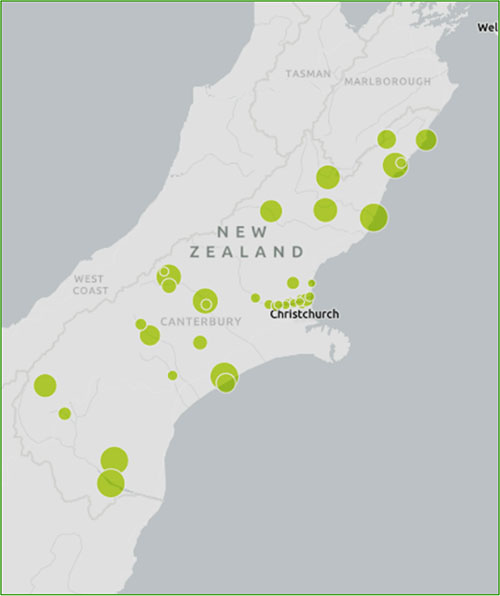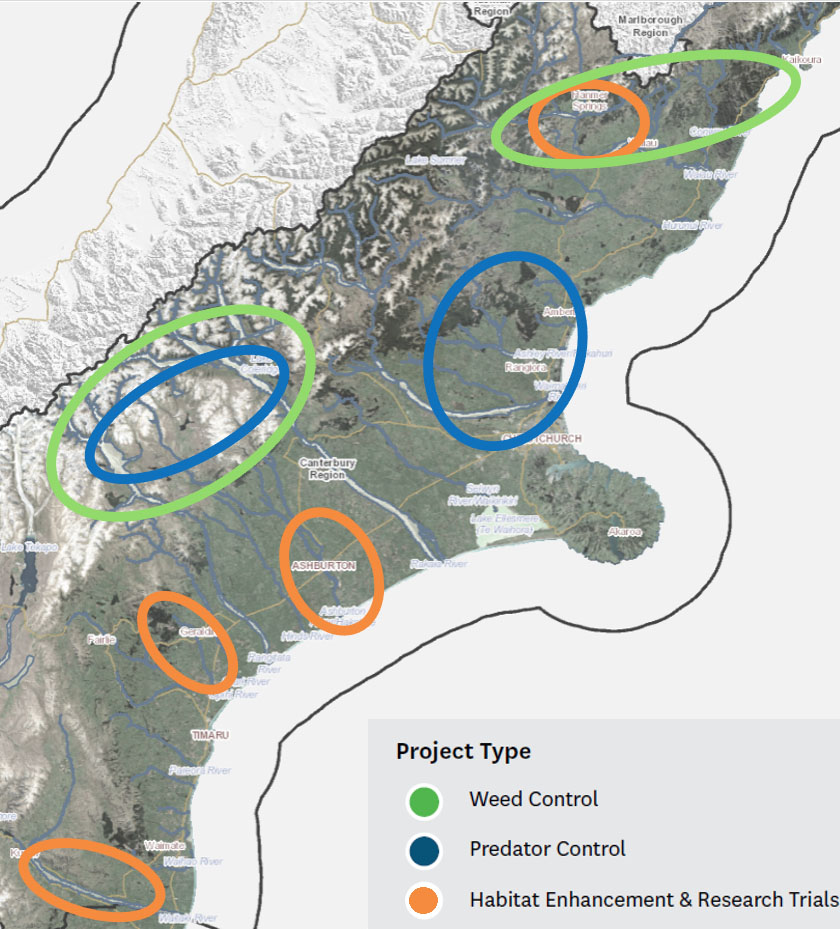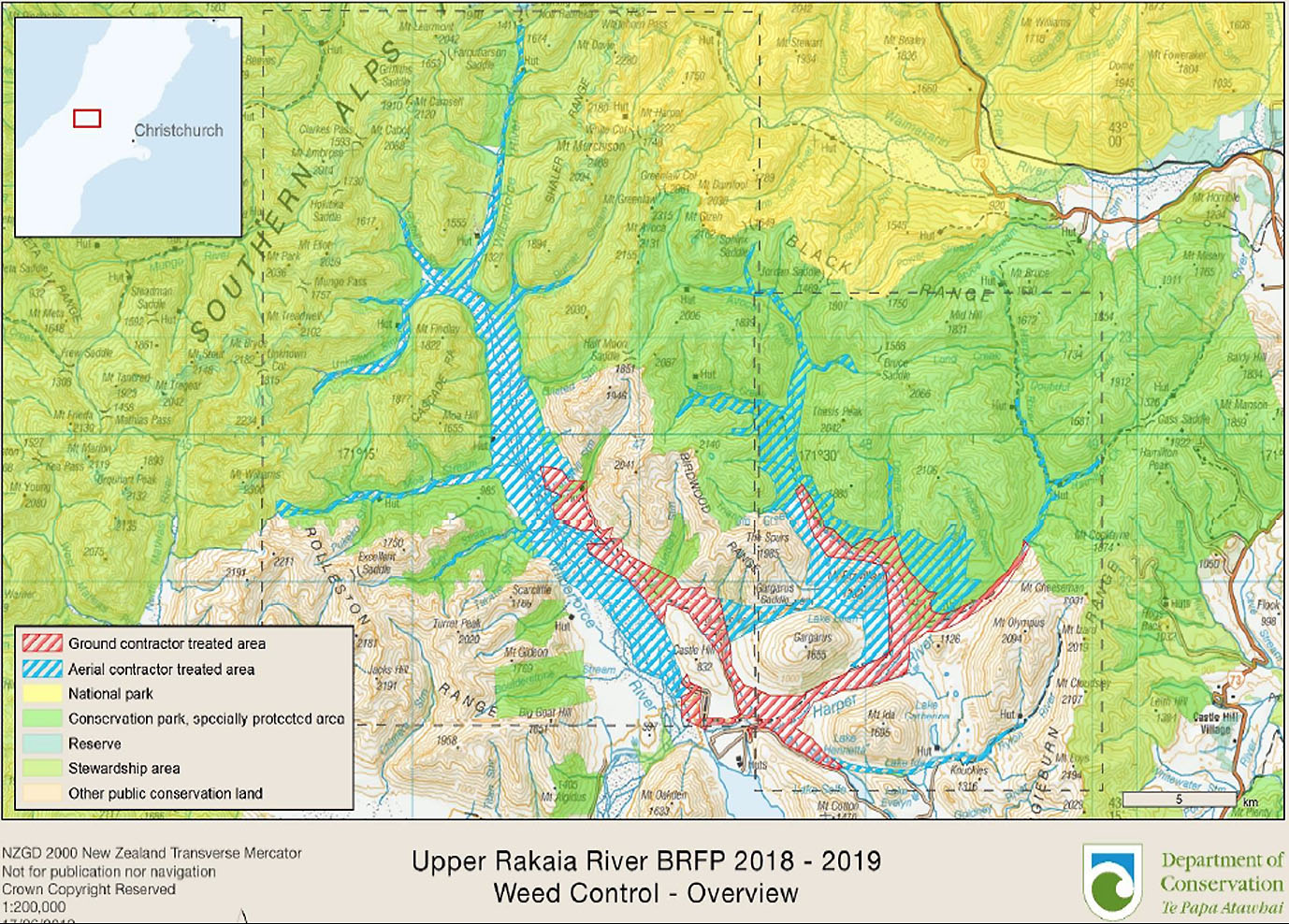Environment Canterbury (ECan)
In New Zealand, regional councils govern an area made up of several district councils. The regional council that governs Canterbury is Environment Canterbury, known as ECan. One of ECan’s mandates is flood protection. Finding a balance between protecting critical infrastructure and private property from floods is increasingly complex as this often conflicts with biodiversity and water quality mandates. Climate change is now adding a new wrinkle. NIWA predictions are for more frequent and more powerful floods, and yet the recent legal definition of a braided river confine the natural braidplain to even less than historical flood widths. This issue is illustrated in the 2019 report on the values of the Rangitata River:
In summary, river encroachment is the single largest known and quantified threat to braided rivers in Canterbury… This matter is in need of urgent attention…. Given the potential ecological risks and considerable uncertainty posed by climate change, there is an increased need to better protect and buffer braided river ecosystems. In practice, this means reducing existing pressures, such as river encroachment, water quality degradation, and exotic plants and animals, to “provide space” for the new pressures associated with climate change on native species. On the ground, this might involve such activities as evaluating the placement of stopbanks, to provide more space for braidplain development, or removal of introduced salmonids from selected high-value native fish habitats. – Rangitata River Catchment Conservation Values
Keynote address: Environment Canterbury Strategic Direction (PDF) Cnr. Grant Edge: Environment Canterbury
While there are complex and still unfolding questions about what exactly is a braided river, who owns sections of them, and who is responsible for managing different aspects, ECan has a legal responsibility to manage and protect them under the Resource Management Act (RMA). To this end, ECan works collaboratively with the Department of Conservation (DOC), Land Information New Zealand (LINZ) and community-based conservation groups to improve braided rivers and their ecosystems. They also fund and offer advice and expertise on collaborative biodiversity projects. BRaid is partially funded through these biodiversity funds.
ECan also manages two regional parks on and around rivers: the Ashley Rakahuri Regional Park and the Waimakariri River Regional Park.
See the Canterbury Water Management Strategy Targets & Goals (2020) and links in the menu to the left for more information.
On-the-ground work - delivering outcomes
Canterbury Water Management Strategy goals and targets
- Braided Rivers
- Increasing bird habitat
- Active management for indigenous plants and wildlife habitats
- Natural character
- Ecosystem health/ biodiversity improving
Canterbury Biodiversity Strategy goals
- Protect and restore habitats and ecosystems
- Enhance public awareness and understanding
- Improve knowledge and information
Regional strategic priorities
- Accelerate regeneration of the natural environment

Key threats, actions & methods
Weed encroachment – control work
- Coordinated with other agencies and landcare groups / landowners
- Strategic, landscape scale (see the maps of the Upper Rakaia below as examples)
- Online mapping
Predators – control work
- Major collaborative projects (DOC, Universities, LINZ/ Boffa-Miskell)
- Working with rivercare groups
Habitat enhancement and investigations
- Testing new methods – island enhancement
- Specific investigations
- Develop or document methods
- Work with agencies, groups, & zones



